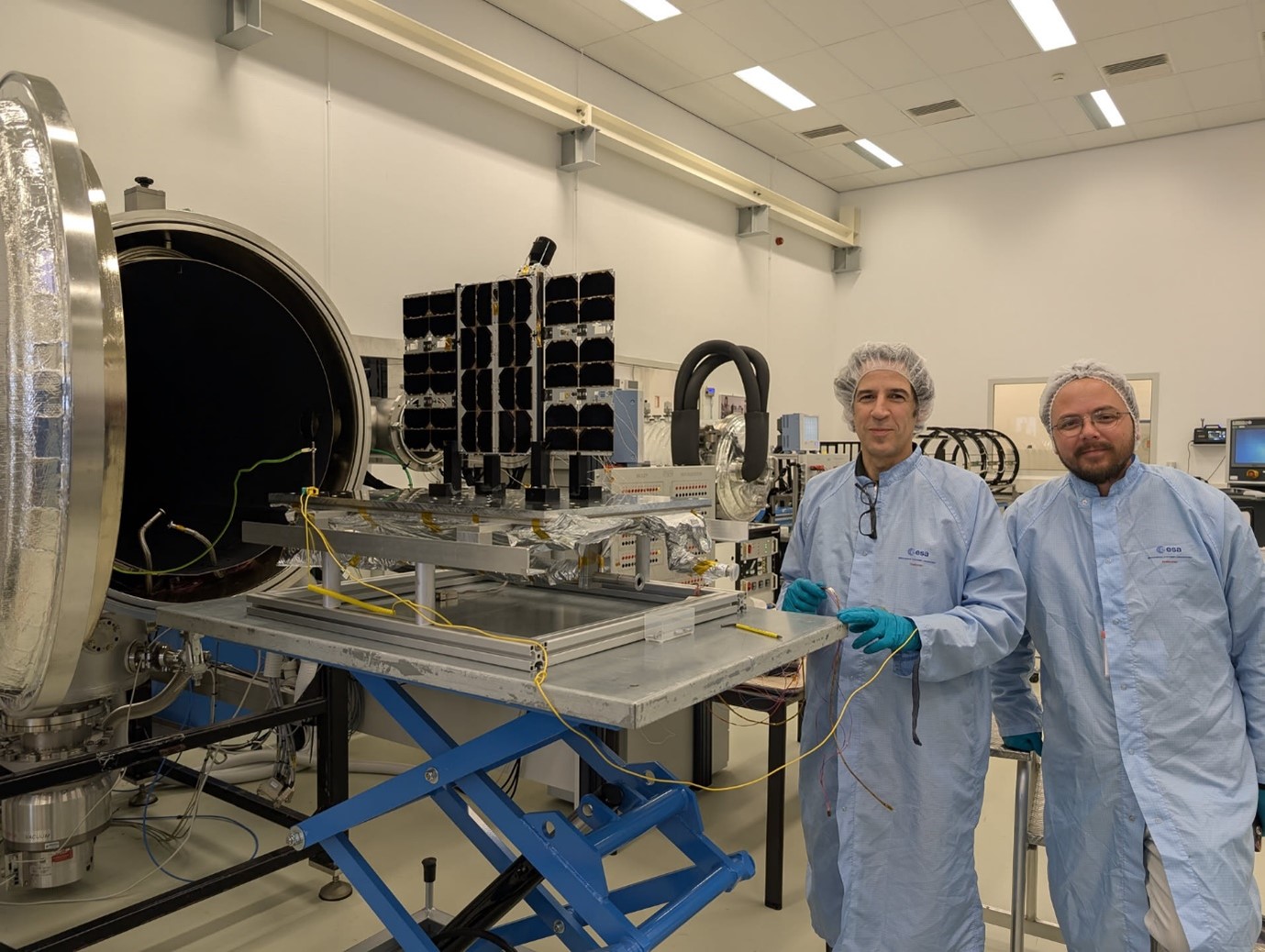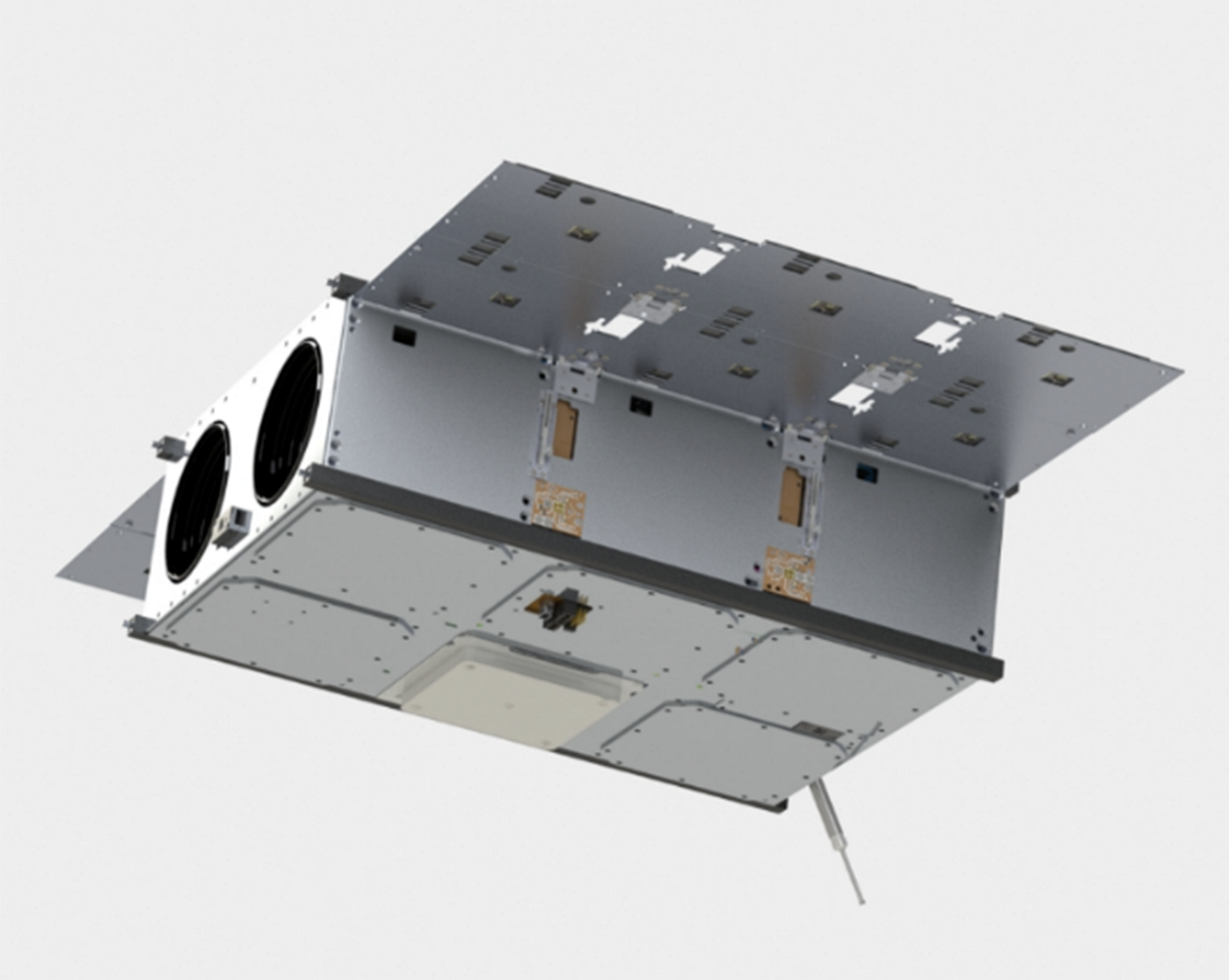First ESA-supported Greek In-Orbit Demonstration (IOD) CubeSat ready for launch

The first of the Greek In-Orbit Demonstration (IOD) CubeSat missions, DUTHSat-2, which is led by the Democritus University of Thrace, has been delivered to the launch provider ExoLaunch, and is ready for launch on the SpaceX Transporter-14 rideshare mission, scheduled for June 2025. Having successfully completed functional and environmental testing in February 2025, the 6U CubeSat mission will capture images in the visible and near infrared spectrum, over both sea and land.
DUTHSat-2 is part of the Greek National Small Satellite Programme (Measure ID 16855), and more specifically under the Greek Cubesats in-orbit Validation Projects that include a total of seven IOV CubeSat missions, managed by the European Space Agency’s (ESA) Greek Connectivity Recovery and Resilience (RRF) Project Team, as part of ESA’s Connectivity and Secure Communications directorate. The programme is executed under the auspices of the Hellenic Ministry of Digital Governance with the support of the General Secretariat of Telecommunications and Posts and is closely supervised by the Hellenic Space Center. The programme is part of the National Recovery and Resilience Plan ‘Greece 2.0’, which is funded by the Recovery and Resilience Facility (RRF), core programme of the European Union’s NextGenerationEU.
The imagery and measurements will be used to provide yield information on soil moisture, as well as marine contamination. Additionally, the imagery frequency bands and the imager resolution have been selected to be able to detect both oil spills and ship bilge water pollution.
DUTHSat-2 will also perform in-orbit demonstration of an essential telemetry and housekeeping unit. The Essential TeleMetry and housekeeping (ETM) is the spacecraft version of a “black box”, allowing operators to have visibility over the spacecraft’s health in case of failures of the main subsystems.

The DUTHSat-2 mission brings together Greek academia and industry, being led by the Democritus University of Thrace, and supported by the Athena Research Center and Greek companies Space Asics and Prisma Electronics SA. The spacecraft was assembled on site at the Democritus University of Thrace, with the design, assembly and test process guided and monitored by ESA’s Connectivity and Secure Communications.
"We are proud of this achievement, which was possible by working as one team and by sharing the same motto: Let us make this happen! We are now looking forward to the launch followed by the start of the operations," said Frédéric Rouesnel, ESA’s Greek Connectivity RRF Project Manager.
“DUTHSat-2 is now at Vandenberg Space Launch Complex 4 with an expected launch date in a couple of weeks onboard a Falcon 9 rocket. We are excited to witness the first satellite of the Greek National Small Satellite programme delivered to the launch provider. Congratulations to both ESA and the Democritus University of Thrace and the respective teams, for managing a technicaly complex project with programmatic challenges. Greece is climbing the steep learning curve of accessing space in order to glean the benefits of the new space economy. We are all proud to be part of the endeavour and wish the best for this as well all upcoming missions," said Prof. Konstantinos Karatzalos, Secretary General of Telecommunications and Posts.


